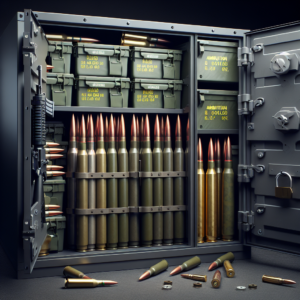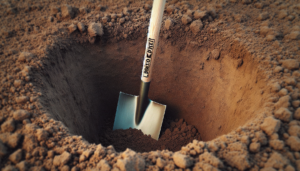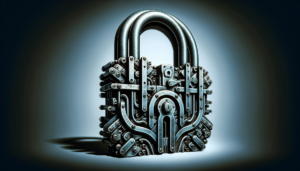
In the video titled “How To Instantly PREPARE When You’re Unprepared l Terror Attack” by Survival Dispatch, you will learn valuable tips on staying prepared for disasters and attacks. The video emphasizes the importance of situational awareness and observing those around you, as well as teaches you how to defend yourself by finding exits, improvising weapons, and gaining an upper hand. It also highlights the significance of preparedness and survival skills and includes links to subscribe for additional exclusive content. It’s important to note that the opinions expressed in the video are solely those of the individual author(s) and for educational purposes only.
Situational Awareness
Importance of Situational Awareness
In the video by Survival Dispatch titled “How To Instantly PREPARE When You’re Unprepared l Terror Attack,” the importance of situational awareness is emphasized. Situational awareness refers to the ability to perceive and understand one’s surroundings, including potential threats and dangers. It is a crucial skill to develop and can make a significant difference in your safety and the safety of those around you.
Being aware of your surroundings allows you to identify any suspicious behavior or unusual activities. It enables you to spot potential threats before they escalate and take appropriate actions to protect yourself. Situational awareness is not only relevant in terror attack situations but also in everyday life, such as when walking alone at night or in crowded public places.
Observing Those Around You
Observing those around you is an essential component of situational awareness. By paying attention to the people in your vicinity, you can identify any suspicious behavior or individuals who may pose a threat. Look for signs of nervousness, unusual movements, or individuals who seem out of place. Trust your instincts and be aware of any gut feelings that something may be off.
Additionally, be mindful of your own behavior and how it may affect your safety. Avoid distractions such as being engrossed in your phone or wearing headphones that may limit your ability to notice potential threats. Stay alert, keep your head up, and scan your surroundings regularly.
Life-saving Skill to Avoid Attacks
Situational awareness is highlighted as a life-saving skill that can help you avoid being targeted in an attack. By being aware of your surroundings, you can identify potential danger and take proactive measures to stay safe. This includes recognizing potential escape routes, finding areas of cover or shelter, and knowing where emergency exits are located.
Moreover, situational awareness can also help you defend yourself in the event of an attack. By being aware of your surroundings and the people around you, you can better assess the situation and make quick decisions that may increase your chances of survival. Situational awareness allows you to identify potential attackers, find potential weapons or improvised tools for self-defense, and plan your actions accordingly.
Defending Against Multiple Attackers
The video also provides tips on defending yourself against multiple attackers. In situations where you are confronted by multiple individuals, it is crucial to maintain situational awareness and assess the threat level. Look for signs of coordination or communication between the attackers and try to identify their intentions.
Defending against multiple attackers requires strategy and quick thinking. Look for opportunities to create distance between yourself and the attackers. Utilize the environment to your advantage, such as using obstacles or natural barriers to impede their progress. If possible, try to separate the attackers, targeting one at a time to level the playing field.
Additionally, consider seeking assistance from others nearby. If there are armed security personnel or police officers present, notify them of the situation and provide any relevant information that may assist in neutralizing the threat. Remember, your safety is the utmost priority, and seeking help should always be considered if it is a viable option.
Preparedness and Survival Skills
Essential Skills to Learn
Preparedness and survival skills are crucial for staying safe in various emergency situations. It is essential to develop a set of skills that can help you navigate through crisis scenarios and increase your chances of survival. Some essential skills to consider learning include first aid and CPR, self-defense techniques, basic navigation and map reading, and fire safety.
Learning these skills can empower you to take control of your safety and the safety of others around you. Knowing how to administer basic first aid and perform CPR can be life-saving in situations where medical help may not be immediately available. Understanding self-defense techniques can provide you with the confidence and ability to protect yourself when confronted with physical threats.
Basic navigation and map reading skills are valuable in situations where you may need to find alternative routes or escape paths. Familiarize yourself with local maps and landmarks to aid in your situational awareness. Additionally, understanding fire safety principles and knowing how to use fire extinguishers can help you effectively respond in a fire emergency.
Finding Exits
One of the most critical aspects of situational awareness is knowing where the nearest emergency exits are located. In emergency situations, such as a terror attack or fire, finding the closest exit and leaving the building promptly is essential. Take note of exit signs and be aware of alternative escape routes in case your primary exit is blocked or inaccessible.
When entering a new building, take a moment to locate the nearest exits and mentally map out potential escape routes. Plan ahead and familiarize yourself with the layout of the building to ensure you can quickly navigate to safety if needed. Stay alert to any changes in your environment that may impact the accessibility of exits, such as blocked pathways or locked doors.
Improvising Weapons
In situations where self-defense may be necessary, improvising weapons can provide you with a means to protect yourself. When faced with an attacker, everyday objects can be transformed into effective tools for self-defense. Look for items such as belts, pens, flashlights, or bottles that can be used as makeshift weapons.
The key to improvising weapons is to use objects that are easily accessible and can provide a tactical advantage. For example, a belt can be used as a whip or a garrote, while a pen can be utilized as a stabbing weapon. It is important to remember that using improvised weapons requires proper training and technique to maximize their effectiveness.
Gaining an Upper Hand
When defending yourself against an attacker, gaining an upper hand is crucial. Look for opportunities to disrupt or incapacitate the attacker momentarily, allowing you to escape or call for help. Target vulnerable areas such as the eyes, throat, groin, or joints to disable the attacker temporarily.
Using techniques such as striking, kicking, or applying pressure to sensitive areas can give you the advantage you need to escape. However, it is essential to remember that physical confrontation should always be a last resort. The goal is to prioritize your safety and seek assistance whenever possible.
Knowing Emergency Exits
Knowledge of emergency exits is vital in any public space. In addition to familiarizing yourself with the exits in individual buildings, it is also important to be aware of emergency exit locations in other public spaces such as shopping malls, theaters, or stadiums.
Make it a habit to observe and memorize the location of emergency exits whenever you enter a building. The ability to quickly identify the nearest exit can significantly enhance your chances of escaping safely in an emergency situation.
Appropriate Clothing for Outdoor Conditions
Being prepared for outdoor conditions is vital, whether it is extreme cold, heat, or inclement weather. Wearing appropriate clothing can help protect you from the elements and maintain your comfort and well-being.
In situations where the weather is cold, dressing warmly is crucial. Layer your clothing to trap heat and protect your extremities with gloves, hats, and scarves. Insulated and waterproof outerwear can provide additional protection from wind and moisture.
On the other hand, in situations where the weather is hot, wearing breathable fabrics and lightweight clothing can help prevent overheating and dehydration. Additionally, wearing a hat, sunglasses, and sunscreen can provide protection from the sun’s harmful rays.
Assessing the Situation
Assessing the situation and making informed decisions are crucial in a crisis scenario. Take a moment to evaluate the level of threat and the potential risks involved. Consider factors such as the number of attackers, their weapons, and your surroundings.
Assessing the situation allows you to determine the best course of action. Identify potential escape routes, areas of cover or concealment, and any resources or tools that may aid in your defense. Make decisions based on your own abilities and the information available to you.
Considering Group Strength
In certain situations, being part of a group can provide strength and protection. Consider the presence of others around you and assess whether joining or forming a group can increase your chances of survival. However, it is essential to be cautious and ensure that the group is trustworthy and united in its goals.
Being part of a group can offer advantages such as increased visibility, collective strength, and shared resources. It can also provide emotional support and a sense of solidarity in challenging circumstances. However, it is crucial to remain vigilant and avoid blindly following the actions or decisions of others.
Presence of Armed Security/Police
In some situations, there may be armed security personnel or police officers present. If you find yourself in such a scenario, it is important to assess their presence and consider seeking their assistance. Notify them of the situation and provide them with any relevant information that may aid in neutralizing the threat.
The presence of armed security or police can significantly impact the dynamics of a crisis situation. Their specialized training and expertise can enhance the overall safety of individuals present. However, it is important to remember that their primary responsibility is public safety, and they may have specific protocols and procedures to follow.
Actions in a Crisis Situation
Find the Closest Exit and Leave the Building
One of the first actions to take in a crisis situation is to find the closest exit and leave the building as quickly as possible. Exiting the building can help remove you from immediate danger and potentially provide a safe space outside. Familiarize yourself with the location of emergency exits and evacuation routes in your surroundings.
When evacuating, remain calm and avoid panicking. Be mindful of others around you and assist those who may need help, especially the elderly, children, or individuals with disabilities. Follow any instructions or guidance provided by emergency personnel.
Find a Safe Place to Hide
If leaving the building is not feasible or may put you in further danger, another option is to find a safe place to hide. Look for areas that can provide cover and concealment, such as locked rooms, closets, or secure barricaded spaces. Avoid hiding in areas with windows that may expose you to potential threats.
Once you have found a safe place, try to remain quiet and out of sight. Turn off your phone or switch it to silent mode to avoid drawing attention to your location. Stay vigilant and listen for any updates or instructions from authorities.
Improvise a Makeshift Weapon and Plan on Defending Yourself
In situations where you may need to defend yourself, improvising a makeshift weapon can provide you with a means of protection. Look for objects in your immediate surroundings that can be used as tools for self-defense. Items such as chairs, belts, or even pens can be utilized as makeshift weapons.
Remember that using improvised weapons requires proper training and technique to maximize their effectiveness. Consider targeting vulnerable areas of the attacker and use the element of surprise to gain an advantage. However, prioritize your safety at all times and seek assistance if it is available.
Call 911 and Wait for Help to Arrive
If you have access to a phone, calling 911 and reporting the situation is crucial. Provide as much information as possible to the emergency operator, including your location, a description of the threat, and any pertinent details that may assist responders.
After making the call, remain in a safe location and wait for help to arrive. Do not confront the threat unless absolutely necessary for your immediate survival. Stay alert to any updates or instructions provided by emergency personnel.
Seeking Shelter Nearby
In some scenarios, seeking shelter nearby may be a viable option. Look for buildings or structures in the vicinity that can provide cover and protection from potential threats. Assess the safety of these locations and evaluate whether entering them would be a safer alternative to remaining exposed.
When seeking shelter nearby, it is important to ensure that the location is secure and free from potential dangers. Take note of any exits or escape routes within the shelter and familiarize yourself with the layout. Stay vigilant and be prepared to evacuate if the situation changes.
Calling 911 for Assistance
As mentioned earlier, calling 911 or the local emergency number is essential in crisis situations. Even if you are not in immediate danger, reporting the situation to the authorities can ensure a prompt response and increase the chances of a successful resolution.
When calling 911, provide clear and concise information about the situation. Remain calm and follow any instructions or questions from the operator. Stay on the line until the operator advises you to hang up, as they may need additional information or updates.
Factors to Consider in Decision-making
Appropriate Clothing for Outdoor Conditions
When making decisions in a crisis situation, it is important to consider the appropriate clothing for outdoor conditions. Dressing appropriately can help protect you from extreme temperatures, inclement weather, and other environmental factors that may impact your safety.
If you find yourself in a situation where you need to evacuate or seek shelter outdoors, wearing clothing suitable for the conditions is crucial. Consider factors such as temperature, wind chill, precipitation, and exposure to the elements. Dress in layers, wear appropriate footwear, and protect any exposed areas of the body.
Potential Ambushes at Exits
While finding the closest exit is a recommended action, it is important to be aware of the potential for ambushes at these exit points. In some situations, attackers may target individuals as they attempt to flee a building or confined space.
Remain vigilant and assess the area around the exit before making a move. If you suspect a potential ambush, consider alternative escape routes or seek cover until it is safe to proceed. Trust your instincts and prioritize your safety at all times.
Knowing Where Emergency Exits are Located
Knowing the location of emergency exits can significantly impact your ability to respond effectively in a crisis situation. Make a habit of familiarizing yourself with the exits in public spaces, including buildings, airports, malls, or stadiums.
Take note of exit signs and follow the designated evacuation routes whenever possible. Be mindful of any changes in the environment that may impact the accessibility of exits, such as locked doors or blocked pathways. Staying informed and prepared can play a vital role in your overall safety.
Calling 911 for Assistance
As previously mentioned, calling 911 for assistance is an important factor to consider in decision-making. By alerting the authorities to the emergency situation, you can ensure that help is on the way and provide them with vital information that can assist in their response.
When deciding to call 911, consider your immediate safety and the ability to make the call without jeopardizing your well-being. Assess the feasibility of communicating with emergency services and provide them with accurate and concise details about the situation.
Additional Suggestions
Dressing Warmly
One suggestion from commenters is to dress warmly, especially in cold outdoor conditions. Layering your clothing and wearing appropriate winter gear such as gloves, hats, and scarves can help protect you from hypothermia or frostbite. Being prepared for the weather can significantly enhance your ability to survive and endure in challenging environments.
Staying Out of Sight
Another suggestion is to stay out of sight whenever possible. In crisis situations, avoiding detection may increase your chances of remaining safe. Find areas of cover or concealment and remain quiet and out of sight until help arrives or it is safe to move.
Assessing the Situation
Continuously assessing the situation is crucial in making effective decisions. Stay alert to any changes in the environment, the behavior of individuals around you, or the progression of the crisis scenario. Regularly reevaluate your options and adjust your actions accordingly.
Using Fire Extinguishers as Weapons
A commenter suggests using fire extinguishers as improvised weapons. Fire extinguishers can provide a means of distraction or disorienting an attacker, allowing you to escape or gain an upper hand. However, using fire extinguishers as weapons requires training and knowledge of proper technique to ensure their effectiveness.
Disclaimer and Safety Precautions
Opinions Expressed in the Video
It is important to note that the opinions expressed in the Survival Dispatch video are those of the individual author(s) and are meant for educational and documentary purposes only. The video provides tips and suggestions on preparedness and survival skills but should not be considered as professional advice or guidance.
Educational and Documentary Purposes
The video serves educational and documentary purposes, aiming to inform and raise awareness about the importance of situational awareness and preparedness. The information provided should not be viewed as a comprehensive guide but rather as a starting point for individuals to further educate themselves and seek professional instruction if desired.
Affiliate Partnerships and Revenue Generation
Survival Dispatch may have affiliate partnerships with brands mentioned in the video. This means that the channel may receive a small portion of the revenue when viewers purchase items using the provided links. Affiliate partnerships help support the channel and enable it to continue producing educational content without relying solely on advertising revenue.
Firearms Footage for Educational and Entertainment Purposes
Firearms footage included in the video is produced by highly trained professionals and is intended for educational and entertainment purposes only. The video does not encourage or promote the use of firearms without proper training, licensing, and legal compliance. Any action or replication of demonstrations shown in the video should only be done with trained professionals present and in accordance with applicable laws.
Warning Against Replicating Actions Without Proper Training and Licensing
The video explicitly warns against attempting to replicate any actions shown without proper training, licensing, and medical professionals present. Engaging in acts of self-defense or using improvised weapons requires knowledge and understanding of specific techniques. Without proper training, individuals may put themselves and others at risk.
Presence of Medical Professionals
It is important to emphasize the significance of having medical professionals present in emergency situations. Medical expertise is vital for providing immediate assistance and treatment to individuals who have been injured or are in need of medical attention. When possible, prioritize seeking medical help from trained professionals.
Survival Dispatch’s Business Nature
Survival Dispatch is not an FFL (Federal Firearms License) holder and does not sell or deal in firearms, parts, or magazines. The content produced by Survival Dispatch focuses on survival and preparedness topics, aiming to provide information and education to its audience.
Conclusion
In the Survival Dispatch video titled “How To Instantly PREPARE When You’re Unprepared l Terror Attack,” various tips and strategies for staying prepared in crisis situations are provided. The video emphasizes the importance of situational awareness, observing those around you, and developing essential survival skills.
Preparing for emergencies and understanding how to respond effectively can significantly enhance your chances of survival. By practicing situational awareness, familiarizing yourself with emergency exits, and learning self-defense techniques, you can increase your ability to protect yourself and those around you.
Remember that the information provided in the video is for educational and documentary purposes. It is essential to seek professional training and guidance when acquiring skills or taking actions related to self-defense or survival. Prioritize your safety, stay calm in crisis situations, and take proactive measures to ensure your well-being.






